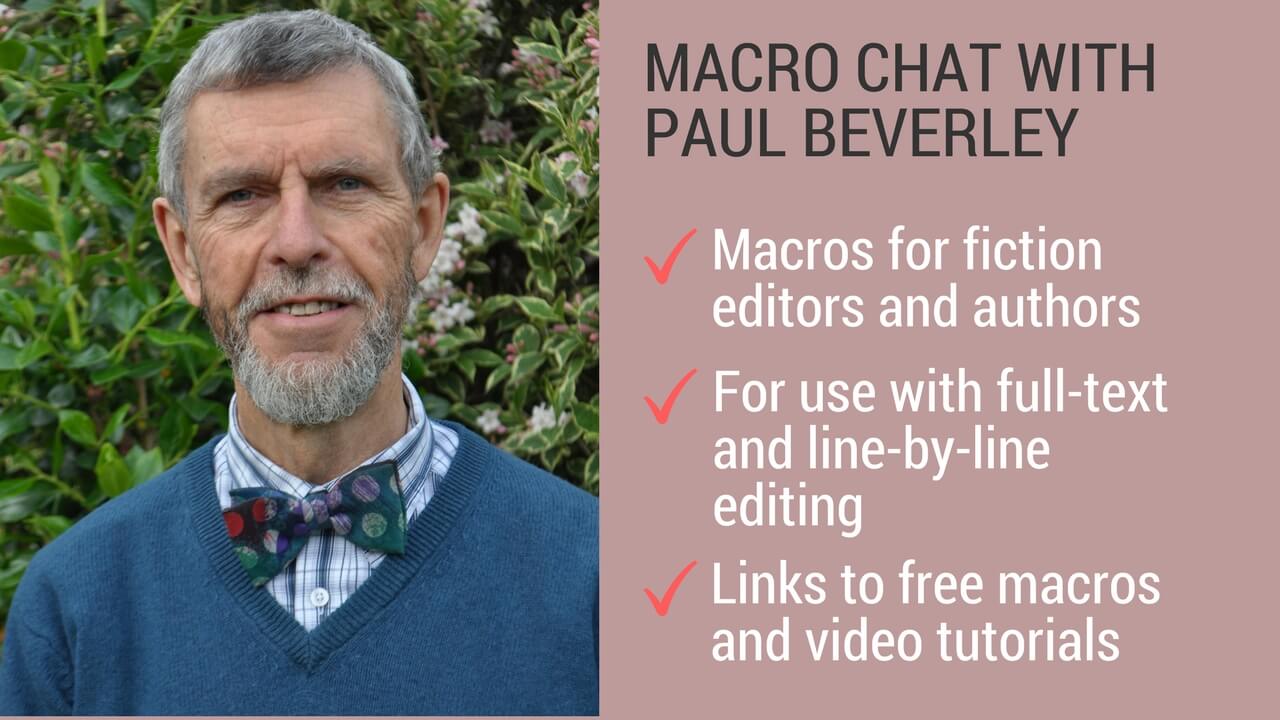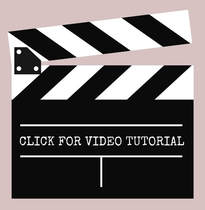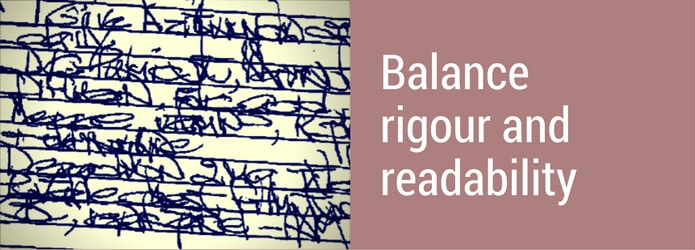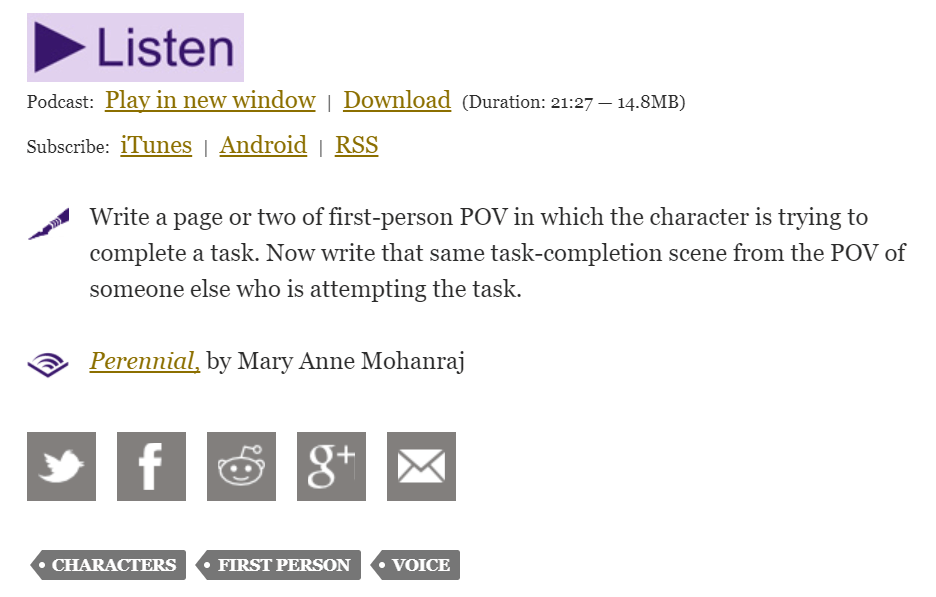|
If you think there's no place for macros in fiction editing, think again. My friend Paul Beverley has collated a core group of macros that will have any fiction line editor, copyeditor or proofreader drooling! Self-publishing authors will love them too!
I don't use all of these (every editor has their preferences) but some of them are staples and save me oodles of time!
Some of the macros apply when you’re looking at the whole text of a novel, while others are selective ... for use while you’re editing line by line. Bear in mind that they're designed to be used with MS Word files.
Macros that work with the whole text These macros are ideal near the beginning of the edit, when you’ve put together the whole book in one single file, and you want to look for inconsistencies. ProperNounAlyse searches the novel for any words that look like proper nouns; it counts their frequency, and then tries to locate, by using a variety of tests, and pairs of names that might possibly be alternative spellings or misspellings, e.g. Jayne/Jane, Beverley/Beverly, Neiman/Nieman, Grosman/Grosmann etc.
FullNameAlyse is similar to ProperNounAlyse, but it searches for multi-part names, Fred Smith, Burt Fry, etc.
ChronologyChecker is aimed at tracing the chronology of a novel. It extracts, into a separate file, all the paragraphs containing appropriate chronology-type words: Monday, Wednesday, Fri, Sat, April, June, 1958, 2017, etc. This file is then more easily searchable to look at the significance of the text for the chronology. WordsPhrasesInContext tracks the occurrence of specific names through a novel. You give it a list of names/words/phrases, and it searches for any paragraphs in the novel that contain them. It creates a separate file of those paragraphs, with the searched element highlighted in your choice of colour. CatchPhrase searches your novel for over-used phrases and counts how many times each phrase occurs.
Macros for when editing line by line
FullPoint/Comma/Semicolon/Colon/Dash/QuestionMark/ExclamationMark These macros change he said, you know ... into he said. You know ... or he said: you know ... or he said – you know ... and so on. FullPointInDialogue and CommaInDialogue These two macros change “Blah, blah.” He said. into “Blah, blah,” he said. and vice versa.
ProperToPronoun
This macro looks along the line to find the next proper noun, deletes it and types ‘she’. But if you then type Ctrl-Z, it changes it back to ‘he’. MultiSwitch You give this macro a list of changes that you might want to implement: Jane Jayne Beverley Beverly that which which that When you click in a word, and run the macro, it finds your alternate and replaces it. It also works with phrases and can also provide a menu of alternates: he said he opined he shouted he voiced she said she opined she shouted she voiced
Louise Harnby is a line editor, copyeditor and proofreader who specializes in working with crime, mystery, suspense and thriller writers.
She is an Advanced Professional Member of the Chartered Institute of Editing and Proofreading (CIEP), a member of ACES, a Partner Member of The Alliance of Independent Authors (ALLi), and co-hosts The Editing Podcast. Visit her business website at Louise Harnby | Fiction Editor & Proofreader, say hello on Twitter at @LouiseHarnby, connect via Facebook and LinkedIn, and check out her books and courses.
0 Comments
If you’re feeling the pinch because publishers, packagers and agencies aren’t offering your desired fees, think about the issue from a marketing perspective.
The fees on offer from publishers and packagers are a perennial topic of conversation for professional editors and proofreaders. Some feel frustrated and anxious about the rates; others enjoy the security afforded by a stable workflow that requires no client-acquisition effort.
It’s important to remember that not everyone’s lowest-paying clients are publishers. If yours are, it might be that you need to switch clients not types of client. Here’s my wise friend and fellow editor Liz Jones: ‘It’s often said that publishers don’t pay as well as non-publishers. In my experience, this isn’t necessarily true. There isn’t much difference in the mid-range, and fewer of my non-publishers feature at the low end, but my highest payers in 2016 were still publishers.’ Crunching the Numbers
Here are a couple of made-up case studies. The numbers are inevitably loose – editorial earnings vary hugely depending on subject area, type of editing, country of residence, and individual experience so it’s impossible to generalize. And global comparisons are problematic because of currency fluctuations and cost-of-living variances.
Just think of these examples as glimpses rather than universal statements of how the market is!
Case study 1: Working with publishers
Joe Word-King is a professional proofreader specializing in the social sciences. He works exclusively for publishers. In the past 12 months he’s been commissioned by 5 publishers to proofread 32 books by 32 authors. Joe’s working day Joe starts at 9 a.m. and finishes at 4.30 p.m. He takes an hour for lunch and 15-minute breaks every 90 minutes to give his eyes a rest. This means he has a total of 6 hours per day available for proofreading. During the breaks he does stuff like checking his emails, grabbing cups of tea and something to eat, and taking a little fresh air. How he acquired those publisher clients One found him in the Society for Editors and Proofreaders’ Directory of Editorial Services. Four added him to their freelance list after he emailed them and asked if he could take their proofreading test (which he passed). How the work offers come in The publishers do the author-acquisition work. The book production managers from those presses email him to ask if he’s free to take on a project of A pages, B words, with a budget of C hours and a total fee of £D. Joe decides whether he will accept or decline the work.
Case study 2: Working with self-publishers
Alicia Sentence-Queen is a professional copyeditor. She works exclusively for independent fiction authors. In the past 12 months she’s been directly commissioned by 19 authors to copyedit 19 books. Alicia’s working day Alicia starts at 9 a.m. and finishes at 4.30 p.m. She takes an hour for lunch and 15-minute breaks every 90 minutes to give her eyes a break. She also spends an average of 75 minutes per day writing blog articles and sharing her content online so that her website is visible in the search engines. This means she has a total of 4 hours and 45 minutes available per day for copyediting. During the breaks she does stuff like checking her emails and social media accounts, grabbing cups of tea and something to eat, and taking a little fresh air. How she acquired those self-publisher clients Fourteen came directly from Google, three from the CIEP’s Directory of Editorial Services, and two from Reedsy. How the work offers come in Alicia does the author-acquisition work. She makes herself visible online so that her clients can find her. They then get in touch directly. A process of evaluation, sampling and quoting begins. Alicia offers a price for the project and waits to see whether the author will accept or decline. Most of the enquiries that Alicia receives don’t turn into paid work – perhaps the author doesn’t like the price, the time frame doesn’t work, or Alicia doesn’t feel she’s the right fit for the job. For that reason, Alicia needs to attract enough people for whom the price, the time frame and the fit will work.
Alicia has a change of heart!
Alicia’s heart is in copyediting and she figures that if she had a bunch of publisher clients doing all the author-acquisition work she wouldn’t have to devote 75 minutes per day to making herself visible. She earns a minimum of £35 per hour. Given that she spends 6 hours and 15 minutes each week marketing, that time costs her £218.75. That works out at nearly a grand a month! She and Joe are good mates so she gets in touch with him and tells him that she’s thinking about working for publishers. They chat about fees – Joe says he earns an average of £23 per hour, which is two thirds of what she’s getting from her indie authors. Given that Joe proofreads for academic presses, Alicia does a little more digging. She talks to a few fiction specialists. The fees for trade publishers seem to be lower still, such that she could end up averaging around £18 an hour, half of what she’s earning now.
What could Alicia do? If Alicia loathes marketing and can meet her weekly needs with £540, she could take the hit and switch to working with publishers, who will do all her author-acquisition work for her and let her concentrate on doing what she loves best. Yes, she’ll earn less but she’ll be happier. If Alicia loathes marketing but needs to earn at least £750 a week to meet her needs, the switch won’t work. She can’t not do the marketing because the reason why she’s able to attract the clients who are prepared to pay her £35/hr fee is because she’s visible, and being visible means doing marketing. If Alicia’s determined to switch solely to publishers, she’ll have to make up a shortfall of £210. That means reducing her monthly spend or increasing the hours she spends on copyediting. She’ll need to decide whether either option would add a level of stress into her life that exceeds her hatred of marketing. If it does, she’d be better off maintaining the status quo! Joe has a change of heart too! After chatting with Alicia, Joe feels a little strung out. Thirty-five quid an hour? He’d love to earn that. Joe’s not averse to putting in the marketing work, not if he can earn the money that Alicia’s on, but it’s not going to happen overnight – Alicia told him that it took a few years for her marketing strategy to kick in so that’s she’s never without work. At the moment, Joe doesn’t have to do anything to find his authors; the publishers do all the grind for him. Sure, he had to get those publisher clients, and he put in a lot of effort – he contacted 70+ presses initially, most of whom weren’t taking on new indie proofreaders. Nevertheless, having now secured a strong publisher base, he sits back and lets the work come to him. There’s a cost to this, of course – someone else is finding the authors and so they get to control the price. His only control over the rate is his right to accept or decline the work. What could Joe do? If Joe can introduce efficiencies into the proofreading process he’ll be able to improve his hourly rate. If he’s already as efficient as he can be, he’ll need get his marketing hat on now and start building his visibility. Over time, he’ll be able to slide out his lower-paying publishers, confident that he’ll attract enough good-fit clients to provide him with the same income stability that the publishers currently afford him. If he needs to maintain his current earnings, he’ll have to do the additional marketing work outside of his normal office hours. In the longer term, as the visibility strategy kicks in, he’ll be able to mimic Alicia’s model and build this marketing activity into his business day. Joe needs to decide whether the impact on his work/life balance is something he’s prepared for. He needs to set the pressure of the additional work against the anxiety born from the publisher fees, and decide whether the change is the right move for him.
Different markets, different benefits, different burdens
On the surface, it might seem like the Alicias of this world have a better deal than the Joes. But there’s more to running a business than just numbers. We have to take into account not just what we need to earn but also what we have to do for what we earn. If you’re happy to be an editor and a marketer, you’ll be able to reap the benefits from wearing those two hats purposefully. If your heart lies in editing only, you have some choices:
I worked exclusively for publishers for a good few years and at the time it suited my life very well. I had a toddler to look after and preschool trumped business promotion. Now I have a teenager and marketing trumps Minecraft! Plus, I happen to love marketing my editorial business so it's not a stress point for me. But that might not be the same for you. Furthermore, the editorial market isn’t binary. Joe and Alicia might look nothing like you. You might sit somewhere in between. You might earn more than them or less than them, and have a ton of demands in your life that J&A will never experience. There’s no one size fits all. Just don’t forget that if you’re not finding your own clients, but your schedule is full, someone else is doing the job for you. There’s a cost to that, and it’s fair that there should be. Further reading
Louise Harnby is a line editor, copyeditor and proofreader who specializes in working with crime, mystery, suspense and thriller writers.
She is an Advanced Professional Member of the Chartered Institute of Editing and Proofreading (CIEP), a member of ACES, a Partner Member of The Alliance of Independent Authors (ALLi), and co-hosts The Editing Podcast. Visit her business website at Louise Harnby | Fiction Editor & Proofreader, say hello on Twitter at @LouiseHarnby, connect via Facebook and LinkedIn, and check out her books and courses.
Here's how to convert a Word document into EPUB or MOBI file format. This option certainly won't be for everyone, but if it suits you, you can master it in seconds ... and for free.
Many authors create their books directly in Microsoft Word because of its excellent suite of onboard styling tools and its compatibility with a range of plug-ins and add-ins (including macros). Pro editors love it for the same reasons.
Once the writing, drafting, editing, and final revisions are complete, it’s time to publish. Is a Word file good enough for epublication? How about a DIY conversion to EPUB or MOBI? It depends on several factors:
Editorial assessment and freebies Perhaps you want to send a review copy to a reader who has a Kindle. Or maybe you want to offer free ebooks for family members and friends. The devices your readers own will determine the required file format. Having your own EPUBs and MOBIs will give you flexibility beyond Word and PDF. And if you're sending your book file for editorial assessment, your developmental editor might prefer to upload your book to their e-reader. They'll makes notes in the file in preparation for their final report or critique. Doing the conversion yourself gives you the freedom to distribute your book without having to jump through the distributors’ hoops. Your budget How about if you’re making your book available for sale? Should you hire a pro formatter for your ebook interior? Yes, definitely, if you have the budget for it, because a pro formatter will do a pro job. The same applies to commissioning various rounds of professional editing. But let’s be honest – not every indie author has deep pockets, and some of you will have to make choices about where to invest your budget. It might be that a DIY conversion will suffice, and in that case Calibre could be your friend. What is Calibre? Calibre is free open-source ebook-management software. With it you can convert a Word file to an EPUB or a MOBI. Go to https://calibre-ebook.com to download and install the software. There are versions for Windows and Mac. Your sales and distribution platform Smashwords If you want to publish via Smashwords, Word is the preferred format. Here's founder Mark Coker:
"We recommend the Microsoft Word path as the best option for most fiction and narrative non-fiction authors because it’s the easiest method to produce high-quality ebooks that are readable on any e-reading device. It will also generate your ebook in multiple ebook formats at the Smashwords store, making your book readable on any e-reading device. By using Microsoft Word, it’s also easy to modify your book at any time."
Make sure you follow the Smashwords guidelines on preparing your Word file, otherwise your published book will be a mess! Furthermore, you’ll risk not qualifying for inclusion in Smashwords’ premium catalogue, which gets your book in front of some big online retailers including:
If your interior is complex, Smashwords will accept EPUB files but they should be professionally designed. There’s further guidance in the Smashwords Style Guide. Kindle Direct Publishing/Amazon If you’re self-publishing via KDP, Amazon will create a MOBI for you from your word file. The same principles apply: as long as you follow the formatting instructions to the tee, and your book interior is straightforward, Word will suffice. Here’s where to access KDP’s Simplified eBook Formatting Guide. If your interior is more sophisticated, I’d advise you to hire a pro. Neither a Word file nor the DIY Calibre conversion offered in this article will do the job to a high enough standard. Direct sales If you’re selling direct from your own author platform, you can offer a PDF. But that’s not what every customer wants. PDFs look fabulous on tablets but awful on e-readers. If your customer wants something different, and you want to maximize sales opportunities, you’ll need another option. Calibre could be the solution. The complexity of your interior design If you have a primarily text-based Word file that will tolerate a simple heading structure for titles, part titles and chapters – as is often the case for fiction and narrative non-fiction – this quick-conversion method could work well for you. If your interior design is more complex, I strongly recommend you commission a professional formatter (some editors also have formatting skills) to do the job on your behalf. In my test, which involved a non-fiction Word file with multiple heading levels, a contents list, boxes, images and other design features, the conversion results for EPUB and MOBI were far from perfect, though I did find solutions when I was prepared to compromise. Here’s how I messed up ... so you don’t have to.
If you still think your Word document fits the bill, here's how to create your EPUB or MOBI file. How to do the quick conversion Open your Word document and save it as an rtf (Rich Text Format) using the Save As function (select Rich Text Format from the drop-down menu). Close the file and head over to Calibre. Click on the Add books icon and select your rtf.
The file will upload to Calibre. Make sure your book file is highlighted, then click on the Convert books icon.
Now you can select and edit the metadata:
Click OK. In the bottom-right-hand corner you’ll see the Jobs icon whirring.
When the conversion is complete, click on the new file format to check that all is well.
This will open the E-book viewer, and it’s one of Calibre’s top features because you can see at a glance what your reader will be looking at.
If you’re happy with your interior, save your converted file to your computer. It’s ready for upload and distribution.
Summing up
If you have a straightforward interior that’s text-based, this quickie Calibre conversion is absolutely worth experimenting with. And it’s free, so even if things don’t go to plan you won’t have lost any money – you’ll just have learned the basics of a new tool that you might be able to take advantage of another time. Poor formatting will earn you nothing but frustrated customers and bad reviews, so:
If your interior is complex, don't even think about using the method outlined here. Work with a pro. Professional eformatting isn’t a service I offer but I’m more than happy to put you in touch with colleagues who can help. Drop me a line via my contact page or comment here on the blog.
Louise Harnby is a line editor, copyeditor and proofreader who specializes in working with crime, mystery, suspense and thriller writers.
She is an Advanced Professional Member of the Chartered Institute of Editing and Proofreading (CIEP), a member of ACES, a Partner Member of The Alliance of Independent Authors (ALLi), and co-hosts The Editing Podcast. Visit her business website at Louise Harnby | Fiction Editor & Proofreader, say hello on Twitter at @LouiseHarnby, connect via Facebook and LinkedIn, and check out her books and courses.
So should you include a podcast transcript? And if you do, should you edit it? Here’s my take.
Writers don’t just listen to podcasts; they create them as part of their author-platform mix. Not all podcasters include transcripts (though I think they’re a good idea) and not all transcripts are created equally.
Some are rough and raw, some are smoothed, and some are edited to within an inch of their life so that they read more like blog posts. What is a podcast transcript and why should you have one? A podcast transcript is a written version of your audio file. Many people glance at a transcript before they listen to a podcast because they want to know what the key discussion points are. Skim reading allows us to digest large chunks of written content quickly. We get to pick and choose what to ignore and what to focus on. Skimming isn’t about deep comprehension but about getting a feel for what’s on offer. People are busy. Podcasts are great because the audience can consume the content while doing other things. That’s great if the listening takes place on the school run or the dog walk. However, that won’t be the choice for all your book-buying audience. Some will want to engage with your podcast, and only your podcast. Those listeners need to know whether you’re worth their time. We can’t skim a podcast (or a vlog) but we can skim a transcript. The transcript is therefore more than a written record. It’s also the key that unlocks the audio engagement door. Given that it’s a representation of what’s said in the podcast, should you edit it? A better question is, what are the consequences if you don’t? Here are four. 1. Eyes before ears – visible content counts If your listener is already fan, a sloppy transcript is unlikely to put them off because they probably won’t even read it – they’re there for you and your audio. But if they’re new, and deciding whether to commit to listening, the written word might well determine whether they leap on board or jump ship. If the first thing someone comes across on the podcast landing page looks and reads like a dog’s dinner, what does that say about the likely quality of the audio content? In reality, the audio content might well be outstanding, but the podcaster isn’t judged on that until the audience has decided to hit Play. It’s the visible content on the page that counts.
2. But it’s all about the audio, isn’t it?
Imagine you’re doing a presentation to a roomful of your author peers. You build your presentation around the problems you’re trying to solve for your audience, create a great slide deck, and rehearse like billy-o so that you’re on top form. On the day of the speaking engagement you turn up ahead of time so that you can check that all your equipment and supporting materials are fit for purpose. Before you go on stage you do some breathing exercises to relax your throat – you want your voice to be clear and engaging for your listeners. You look the part. You sound the part. And you’re a writer in a roomful of writers. That’s all that matters, right? After all, it’s a face-to-face speaking engagement. The problem is, you haven’t brushed your teeth for three weeks and your breath honks. If you were one of those presenters that likes to be front and centre, the first row would be in trouble. But you’re a walker. You like to engage with your audience – a little bit of up close and personal. It’s not the first row that's in trouble. The whole room is at the mercy of your Wookie mouth. Shame, because no one’s interested in your stunning insights, your top tips for how to overcome writer’s block, fact check, or edit the first draft, never mind that what you tell them could make their lives a hundred times easier. All anyone’s thinking is Stay back. A sloppy podcast transcript is like bad breath. It focuses your potential audience’s attention on the wrong thing and risks putting them off before the audio fun’s even begun.
3. Standing out
Podcasts are increasingly popular tools used by business owners, marketers, writers and hobbyists to communicate with their clients, fans and friends. And a lot of podcast transcriptions are sloppy. All the effort, and the budget, goes into creating great audio. In ‘How to build a web presence that outsmarts, outperforms and outlasts the search engines’ (Summit on Content Marketing 2017), Stoney deGeyter talks at some length about being excellent in everything we do so that we’re not battling with search-engine algorithms and rankings. He advises focusing on extraordinary engagement that makes our audience/customer journey as easy as possible. Good advice indeed. So why not stand out and create a top-notch podcast transcription?
That way you give people nothing to complain about and everything to rave about. Word of mouth is more likely to kick in. And with it, audience growth, engagement, advocacy and book sales. Certainly, some people won’t care if your transcript is a mess. It’s not them you have to worry about though. It’s about those who do care, those who judge you negatively because they think you don’t give a damn. Which leads us to the biggie. 4. Wordy people need to do wordy well You’re a writer. Given that your podcast is part of your author platform, the last thing you want to do is give anyone the impression that your writing is poor, even if you’re using audio as an engagement tool. If a famous chef was promoting her new recipe book in my local Waterstones and the canapes made me want to hurl, certainly I’m not going to buy her book. But, much worse, I’m not going to book a table at her restaurant. The biggest problem for the author with a sloppy transcript is not that no one will listen to the podcast but that no one will buy her books.
How much should you edit?
It’s your choice but bear in mind that the goal is to encourage the listener to engage with the audio and buy your books. The podcasting author has to strike a comfortable balance between rigorous word-for-word accuracy and readability. Here are some guidelines:
Ideas for you to steal Even if you don’t include a transcript, consider the following:
If you decide to hire someone to create and edit your transcript for you, take a look at this article from my copywriter pal Gudrun Lauret: Why Not to Use Cheap Transcription Services. And here's a cautionary note that Tim Lewis posted on my Facebook page: 'Honestly, transcripts are a right PIA but you are right: they are well worth doing. Something for amateur podcasters to be careful with is that many automated transcription services such as Trint (and the free services) really struggle with anything that isn’t a standard US or UK accent, and if they don’t get to pretty high accuracy you will spend longer fixing it than the length of the interview. I use rev.com which is human-based (but more expensive). Even that’s not perfect though.' Here are some examples of what others are doing: Tim Lewis, Begin Self-Publishing Podcast Tim’s transcripts are gently smoothed to aid readability, indicate who’s speaking, and include a brief content summary. He increases visual engagement by introducing eye-catching quotes from the show. Here’s an example from the episode I did with him on fiction editing.
Julie Anne Eason, The Successful Author Podcast
Julie Anne doesn’t include transcripts but she does provide detailed overviews of each episode’s content, additional related resources, eye-catching quotes from the show, and a bullet list of key themes.
Wesley Chu, Piper J. Drake, Mary Robinette Kowal, Mary Anne Mohanraj, Brandon Sanderson, Howard Tayler, Dan Wells, Writing Excuses
The hosts have an index of smoothed transcripts available in a separate menu. They offer a summary of the show, a pick-of-the-week related resource and a writing prompt (mini homework!), and subject tags so listeners can access related content (a really neat and useful addition that’s common on blogs and works very well in this setting too).
I'll be digging deeper into author podcasting in a forthcoming blog. I hope you'll join me for that!
Louise Harnby is a fiction copyeditor and proofreader who specializes in helping self-publishing writers prepare their novels for market.
She is the author of several books on business planning and marketing for editors, and runs online courses from within the Craft Your Editorial Fingerprint series. She is also an Advanced Professional Member of the Society for Editors and Proofreaders. Louise loves books, coffee and craft gin, though not always in that order. Visit her business website at Louise Harnby | Proofreader & Copyeditor, say hello on Twitter at @LouiseHarnby, or connect via Facebook and LinkedIn. If you're an author, take a look at Louise’s Writing Library and access her latest self-publishing resources, all of which are free and available instantly. |
BLOG ALERTSIf you'd like me to email you when a new blog post is available, sign up for blog alerts!
TESTIMONIALSDare Rogers'Louise uses her expertise to hone a story until it's razor sharp, while still allowing the author’s voice to remain dominant.'Jeff Carson'I wholeheartedly recommend her services ... Just don’t hire her when I need her.'J B Turner'Sincere thanks for a beautiful and elegant piece of work. First class.'Ayshe Gemedzhy'What makes her stand out and shine is her ability to immerse herself in your story.'Salt Publishing'A million thanks – your mark-up is perfect, as always.'CATEGORIES
All
ARCHIVES
July 2024
|
|
|
|











































 RSS Feed
RSS Feed





